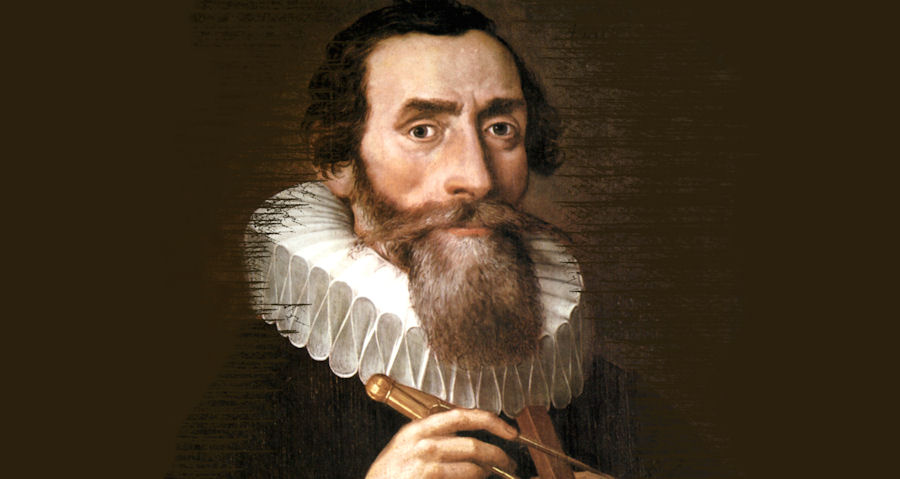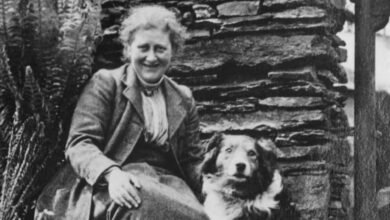Johannes Kepler
Johannes Kepler Biography
Johannes Kepler was born on December 27, 1571, in Weil der Stadt, a small town in what is now the Stuttgart region of Germany. He was the fourth child of Heinrich Kepler, a mercenary who left the family when Johannes was only five and is thought to have died in the Eighty Years’ War. His mother, Katharina, was the daughter of an innkeeper. She did her best to allow Johannes to experience the wonders of nature, and it was probably because of this that he developed a love for astronomy. It was she who took him to a high place so that he could see the great comet of 1577 more clearly, and it was probably she who called him outside in 1580, when he was nine, to look at the lunar eclipse.
In 1589, after leaving grammar school, Kepler attended the University of Tübingen and proved himself to be a skilful mathematician. Under Michael Maestlin, the university’s professor of mathematics, he learned about planetary motion and became a fan of the Copernican system, which posits that the Sun, rather than the Earth, is at the centre of the universe.
Kepler had wanted to become a minister, having studied both philosophy and theology whilst at university, and having attended seminary at Maulbronn before that. However, he was recommended as a teacher of mathematics and astronomy at a school in Graz, a position which he took up at the age of 23 in April 1594. While teaching at Graz, Kepler claimed to have had an epiphany on 19 July 1595, in which he believed he was shown God’s geometrical plan for the universe. His experiments led him to publish a book called Mysterium Cosmographicum in 1596. A second edition, which was published in 1621, included all of his observations and corrections since the first edition was published some quarter of a century earlier.
The year before he published Mysterium Cosmographicum, Johannes Kepler was introduced to Barbara Müller, a 23-year-old, twice-widowed mother of one, and they began courting. The couple was married on 27 April 1597. They had two children who died in infancy, but three more children would follow: a daughter called Susanna and two sons, Friedrich and Ludwig.
Following the publication of Mysterium Cosmographicum, Kepler formulated grand plans to expand on the work by publishing four more books dealing with the sun, stars, planets and their motions, the physical nature of the planets and the effects of the heavens on the earth. To assist him with his work, he initiated correspondence with several eminent astronomers to whom he had previously sent copies of his book. One such person was Tycho Brahe, who was particularly critical of the use, in Kepler’s work, of the inaccurate data supplied by Copernicus. Nevertheless, the two started regular correspondence. Eventually, amid growing religious tension in Graz, which threatened his employment, Kepler accepted an invitation from Tycho to visit him in Prague.
Kepler arrived in Benátky nad Jizerou, approximately 35 km outside of Prague, where Tycho Brahe was constructing a new observatory, on 4 February 1600. He met Tycho and his assistants and stayed for the next couple of months as a guest. As Tycho began to trust Kepler, he allowed him more and more access to his data. Following an argument, however, over negotiations for a more formal employment arrangement with Tycho, Kepler left and headed to Prague. The pair soon came to an arrangement, though, and Kepler returned to Graz to collect his family. Political and religious tensions in Graz prevented him from returning immediately to Brahe, but when he refused to convert to Catholicism, he was banished. He and his family then headed to Prague, where, from 1601, he was supported by Tycho Brahe. However, on 24 October 1601, Tycho died unexpectedly. Kepler was appointed as his successor as the imperial mathematician, with the responsibility of completing Brahe’s unfinished work.
As the imperial mathematician, Johannes Kepler’s primary responsibility to Emperor Rudolph II was to provide astrological advice. Kepler had been providing detailed horoscopes to friends and family since his university time, and so this presented no problem for him. The emperor showed an active interest in Kepler’s work and, on paper at least, provided an ample income. However, due to he financial troubles the emperor was experiencing at the time, actually getting hold of enough money to look after his family proved challenging and was causing problems for him at home. However, this was balanced by the fact that his position at court allowed him to practice his Lutheran religion without hindrance and also provided him with access to other scholars, which allowed his astronomical work to progress quite rapidly.
As he now had unrestricted access to Tycho Brahe’s work, he made significant strides in his work on optics, pausing most of his other projects in 1603 to focus exclusively on the subject. This resulted in a manuscript that he presented to Emperor Rudolph on January 1, 1604. The manuscript was published as Astronomiae Pars Optica (The Optical Part of Astronomy), within which it is worth noting that Kepler was the first to correctly describe how images are presented to the human eye upside down before being inverted by the lens for presentation to the retina. The work is now regarded as the foundation of modern optics.
In October 1604, Johannes Kepler began systematically observing a bright new evening star, a supernova, which led him to conduct further research into the phenomenon. The research resulted in the publication of Astronomia nova, which contains Kepler’s first two laws of planetary motion.
Kepler then switched his focus back to the Rudolphine Tables, which were the unfinished work he took over from Tycho Brahe. The tables included specific predictions of planet and star positions, but the work would continue for several more years before it was completed.
In 1610, Johannes Kepler was contacted by Galileo Galilei, who shared his observations of four new satellites orbiting Jupiter, seeking confirmation of his own findings. This confirmation came enthusiastically from Kepler as he realised the significance of not only Galileo’s observations but the means by which they had been achieved. Through the use of a relatively new device called a telescope.
The following year, Johannes Kepler published a description of the symmetry of snowflakes and extended the discussion to include a statement about the most efficient way to pack spheres, a concept that came to be known as the Kepler conjecture. However, 1611 would mark another significant turn in Kepler’s life. Emperor Rudolph’s health was failing, and after he was forced to abdicate by his brother Matthias as King of Bohemia, it became apparent that Kepler’s days at court were numbered. During the same time, his wife Barbara became ill with Hungarian spotted fever, and all three of his children contracted smallpox. Friedrich, his six year old son died, and soon afterwards so did Barbara. Kepler had been offered a post by the University of Padua as mathematics professor to replace Galileo, but he wanted to keep his family in Germany. He had arranged for a move to Linz as a teacher and mathematician, but delayed his departure following the deaths of his wife and son. Upon the emperor’s death in 1612, Matthias actually reaffirmed Kepler’s position at court but allowed him to relocate to Linz.
Whilst in Linz, he published a formal and systematic work on the year of Christ’s birth and also wrote a similarly detailed treatise on how to measure the volume of containers. The first was published in 1613 and the latter in 1615. In the same year as the publication of the work on the date of Christ’s birth, which was called De Vero Anno, he married a 24-year-old woman called Susanna Reuttinger. They had six children, although the first three died in childhood. The next three, though, Cordula, Fridmar, and Hildebert survived.
Between 1615 and 1621, Johannes Kepler published a three-volume work called Epitome astronomiae Copernicanae (Epitome of Copernican Astronomy), which contained all three of his laws of planetary motion. The first two laws were purposefully extended to cover all the planets, the Moon, and the satellites of Jupiter. This would become his most influential work. He also published astronomical calendars, in which he forecasted political events, the weather, and planetary positions. These became very popular and helped him to offset the cost of producing his other work. By 1624, though, the calendars started to cause more trouble than they were worth, partly due to the ambiguity of his predictions. The last of his calendars, published in 1624, was publicly burned.
During this time, Johannes Kepler had to turn some of his efforts in another direction when his mother, Katharina, was accused of witchcraft. Kepler devised a successful legal defence, and after 14 months in prison, Katharina was released in October 1621.
By 1623, Kepler had finally completed the Rudolphine Tables, but they would not be printed until 1627, at Kepler’s own expense in the city of Ulm, where Kepler and his family had relocated following the escalation of religious tensions and the siege of Linz in 1626.
The following years consisted of extensive travel following the military successes of the emperor’s forces. He spent time in the imperial court in Prague as well as in Linz and Ulm. He finally moved to Regensburg in southeastern Germany, but shortly after arriving there, he fell ill. Johannes Kepler died on 15 November 1630. He was buried in Regensburg.
Johannes Kepler FAQ
Johannes Kepler was a 17th-century German astronomer, mathematician, and astrologer who formulated the three laws of planetary motion, laying the groundwork for modern astronomy and physics.
His laws describe how planets orbit the sun:
– Planets move in elliptical orbits with the sun at one focus.
– They sweep out equal areas in equal times.
– The square of a planet’s orbital period is proportional to the cube of its distance from the sun.
Kepler built on the observations of Tycho Brahe and challenged the long-standing belief in circular orbits. His work supported and refined the Copernican heliocentric model.
Kepler is recognised as one of the key figures in the Scientific Revolution. His laws remain fundamental in celestial mechanics, and his work paved the way for Newton’s theory of gravity.
[this article originally appeared on 5MinuteBiographies.com on 28 March 2019]






